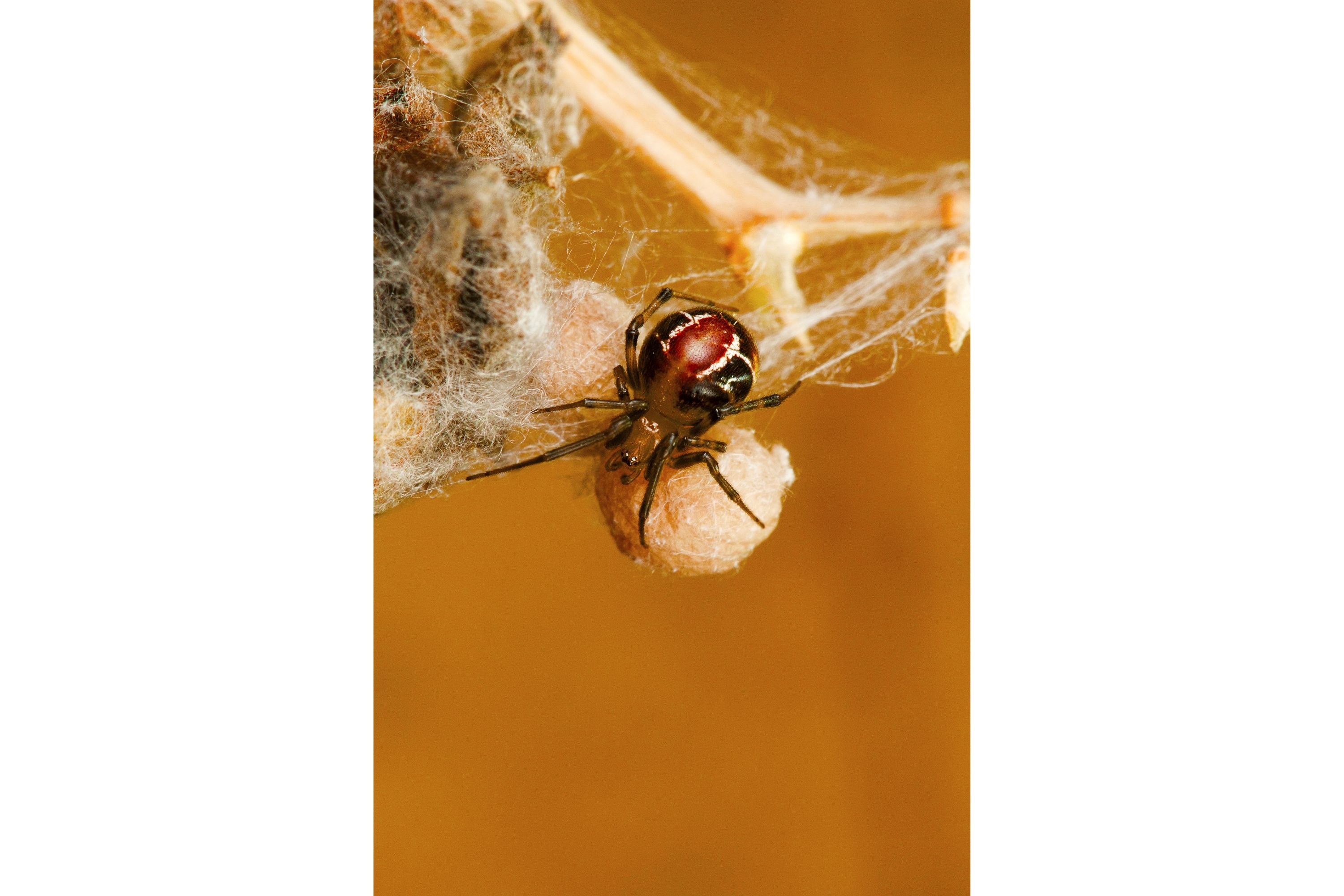Common house spider
(Parasteatoda tepidariorum)

Description
Parasteatoda tepidariorum, the common house spider or American house spider, is a spider species of the genus Parasteatoda with a cosmopolitan distribution. Common house spiders are synanthropic and live in and near human dwellings. Their prey mechanism is similar to that of the other cobweb spiders: the spider follows disturbances transmitted along the web to entangle and then paralyze its prey, which usually consists of household insects and other invertebrates (often considered as pests). Common house spiders are variable in color from tan to nearly black, frequently with patterns of differing shades on their body. Females are generally between 5 and 6 millimetres (0.20 and 0.24 in) long, and males are generally between 3.8 and 4.7 millimetres (0.15 and 0.19 in) long. They can be an inch (2.5 cm) or more across with legs outspread. P. tepidariorum is similar in body shape to widow spiders. Males have a less bulbous abdomen than females. Common house spiders' size and coloration allow the spiders to blend into the background and escape notice. This species can live for more than a year after reaching maturity. Females suspend their egg sacs in their webs; the spherical egg sacs have a tan papery outer layer. Each egg sac contains from 150–200 eggs, with a single female producing 15–20 egg sacs in its lifetime. The spiderlings remain in the mother's web for several days after coming out of the egg sac. Common house spiders usually feed on small insects and household pests such as flies, mosquitoes, ants and wasps. They can randomly attack grasshoppers, butterflies, cockroaches or other spiders depending on their size. If the prey is too agile, the spider will try shooting web at it from a distance before pulling the thread toward itself. Bigger females can also attract baby skinks inside their web by leaving fly remains hanging in it. Once its food dries out, the spider usually drops it to the floor in order to free space in its web, instead of destroying and rebuilding it or changing its location. Three spider species usually prey upon them: the pirate spiders of the genus Mimetus (Mimetidae), as well as two jumping spider species – Phidippus variegatus and Metacyrba undata. The latter one often falls prey to its own food when it gets trapped in the tangling web after missing the jump on its target.
Taxonomic tree:







